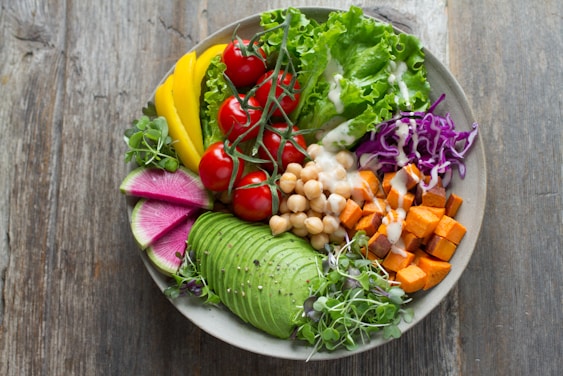Dry January isn’t the only form of dietary restriction that people put themselves through at the start of the year – January also sees the start of Veganuary, 30 days of switching over to a vegan, or vegan-leaning diet. With its emphasis on vegetables, fruits, legumes and grains and, of course, it’s ethical consideration of animals, veganism is on the rise. In the US from 2004 to 2019 there was an increase from 290,000 to more than 10 million vegans – a 30-fold increase.
So if you’re considering giving veganism a try what are the best steps to switching your diet?
1 – Educate yourself
Learn about the benefits of a vegan diet and the potential challenges. It’s important to understand how to get all the nutrients your body needs on a plant-based diet. Although doctors don’t worry like they once might have done, it’s still important to ensure that you’re creating a healthy, balanced diet.
2 – Start slow
Photo by Anna Pelzer on Unsplash
It’s not necessary to go vegan overnight. You can start by adding more plant-based meals to your diet and gradually phasing out animal products. This slowly-slowly vegan approach has far more chance of success than a sudden switch, and it gives you time – and less pressure – to get to grips with a new diet.
3 – Plan your meals
Make a list of your favorite vegetables, grains, legumes, nuts, and seeds and start experimenting with new recipes. You can also try using vegan alternatives to your favorite animal products, such as tofu or tempeh in place of meat, or vegan cheese and milk. Don’t forget to figure out some vegan options for those times when you’re in a rush, or you don’t feel like cooking – these are often the times when most people slip up.
See also McDonald’s Healthy Swaps: The MAN v FAT Swap Shop
4 – Stock your pantry
Keep your kitchen stocked with a variety of plant-based foods, including whole grains, beans, nuts, seeds, and plenty of fruits and vegetables. Supermarkets now have plentiful options when it comes to vegan-friendly ready meals and grab-and-go options.
5 – Don’t forget about protein
It’s important to make sure you’re getting enough protein on a vegan diet. Good sources of protein include beans, lentils, tofu, tempeh, nuts, and seeds.
6 – Get enough nutrients
Some nutrients, such as vitamin B12 and omega-3 fatty acids, can be more difficult to obtain on a vegan diet because these are nutrients that typically come from animal sources. Consider taking supplements or incorporating foods fortified in b12 and omega 3 into your diet but remember to check the sourcing – not all food manufacturers have such a clear definition of what makes something vegan and labelling can often be confusing.
7 – Find support
It can be helpful to have a support system when you’re making a big change to your diet. Connect with other vegans or join a vegan group to get advice and support. The Vegan Society is a great starting point for anyone in the UK trying to make the switch.





